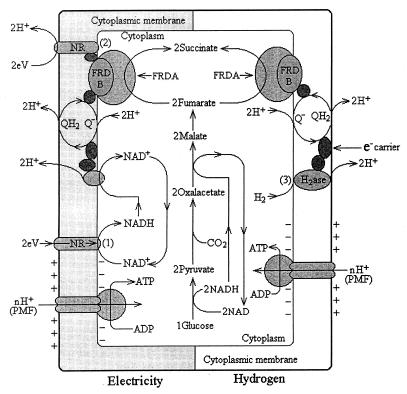FIG. 8.
Hypothetical model depicting two different biochemical functions for NR’s role as an electronophore or electron channel during the growth of A. succinogenes on glucose plus electrical reducing power and those during its growth on glucose plus H2. (1) Electrically reduced NR chemically reduces NAD+ to NADH, generating more reducing equivalents for the reduction of both oxaloacetate and fumarate; and (2) in electricity-dependent fumarate reduction, NR replaces menaquinone in the fumarate reductase complex and electrical reducing power reduces fumarate to succinate while translocating protons, which drives membrane-bound ATP synthesis. During growth on H2 plus glucose, more succinate and cells are formed than on glucose alone but less than with electrically reduced NR because (3) membrane-bound hydrogenase links only to fumarate reductase and not to NADH generation. Symbols: 2eV, electrical reducing power; QH2, reduced menaquinone; FRD, fumarate reductase complex; PMF, proton motive force.

